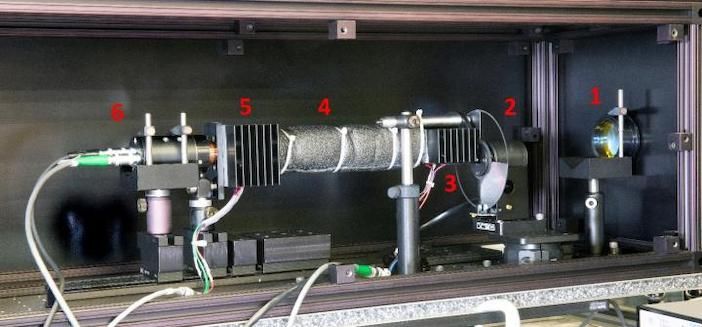Researchers at the National Institute of Standards and Technology in the USA have invented a portable and stable contactless radiation thermometer capable of measuring temperatures to a precision of within a few thousandths of a degree Celsius.
Contactless thermometers measure the infrared (heat) radiation given off by objects without touching them, but up until now even high-end radiation thermometers have produced readings with worryingly large uncertainties, reducing their usefulness for industrial and research applications in aerospace.
Gerald Fraser, chief of the National Institute of Standards and Technology (NIST) Sensor Science Division said, “This innovation makes non-contact thermometry competitive with the best commercial contact thermometers in accuracy and stability in a temperature range that humans experience daily. This enables many new opportunities in product inspection and quality control and in defense and security where conventional contact methods are impractical or too expensive.”
The NIST thermometer is about 60cm (24 inches) long. The prototype instrument can measure temperatures between -50˚C (-58˚F) to 150˚C (302˚F). The corresponding infrared wavelengths are from 8 to 14 micrometers (millionths of a meter).
Radiation thermometers often contain a lens for focusing the infrared radiation and a pyroelectric sensor, a device that converts heat energy into an electrical signal. Their measurements can be affected by temperature differences along the thermometer and by temperature outside the instrument.
The ART is fitted with a suite of interior thermometers that constantly gauge temperatures at different points in the instrument. Those readings are sent to a feedback loop system which keeps the 30cm (12in) cylinder containing the detector assembly at a constant temperature of 23 C (72 F).
It also features other design improvements, including a method for reducing errors from what is called the size-of-source effect, which results when radiation enters the instrument from areas outside its specified field of view.
NIST researchers have calibrated ART against standards-grade contact thermometers, and can remain stable to within a few thousandths of a degree for months under continuous operation. That makes the system very promising for applications that involve remote sensing over long periods.
NIST physicist Howard Yoon, who designed the Ambient-Radiation Thermometer (ART) and directed the project said, “All temperatures are equal, but some are more equal than others. That 200-degree span covers nearly all naturally occurring temperatures on Earth.
“If you make a big impact in measuring objects in that range, it really matters.”
“Imagine being able to take the NIST design out in the field as traveling radiation thermometers for accurately measuring variables such as land- and sea-surface temperatures,” he added. “It could serve as a trustworthy method of calibrating satellite IR sensors and validating the huge weather science programs that are used to predict, for example, the paths and strengths of hurricanes.” Its lower range of -50 C (-58 F) makes it suitable for monitoring the temperature of ice over polar regions, typically in the range of -40˚C (-40˚F) to -10˚C (14˚F).
There are several methods of making very high-accuracy temperature measurements, but few are well-suited to field work. Platinum resistance thermometers are fragile and need frequent recalibration. The standard temperature source for transferring that calibration to the ART involves a heat-source cavity inside about 42 liters (11 gallons) of liquid.
“Those are the best sources we have,” Yoon said. “But it is impractical to measure water temperature by putting a thermometer in the ocean at intervals, and you don’t want to constantly calibrate your radiation thermometer using a calibration source like that on board a ship.”
The thermometer’s design and research has been published this month in the journal Optics Express.





